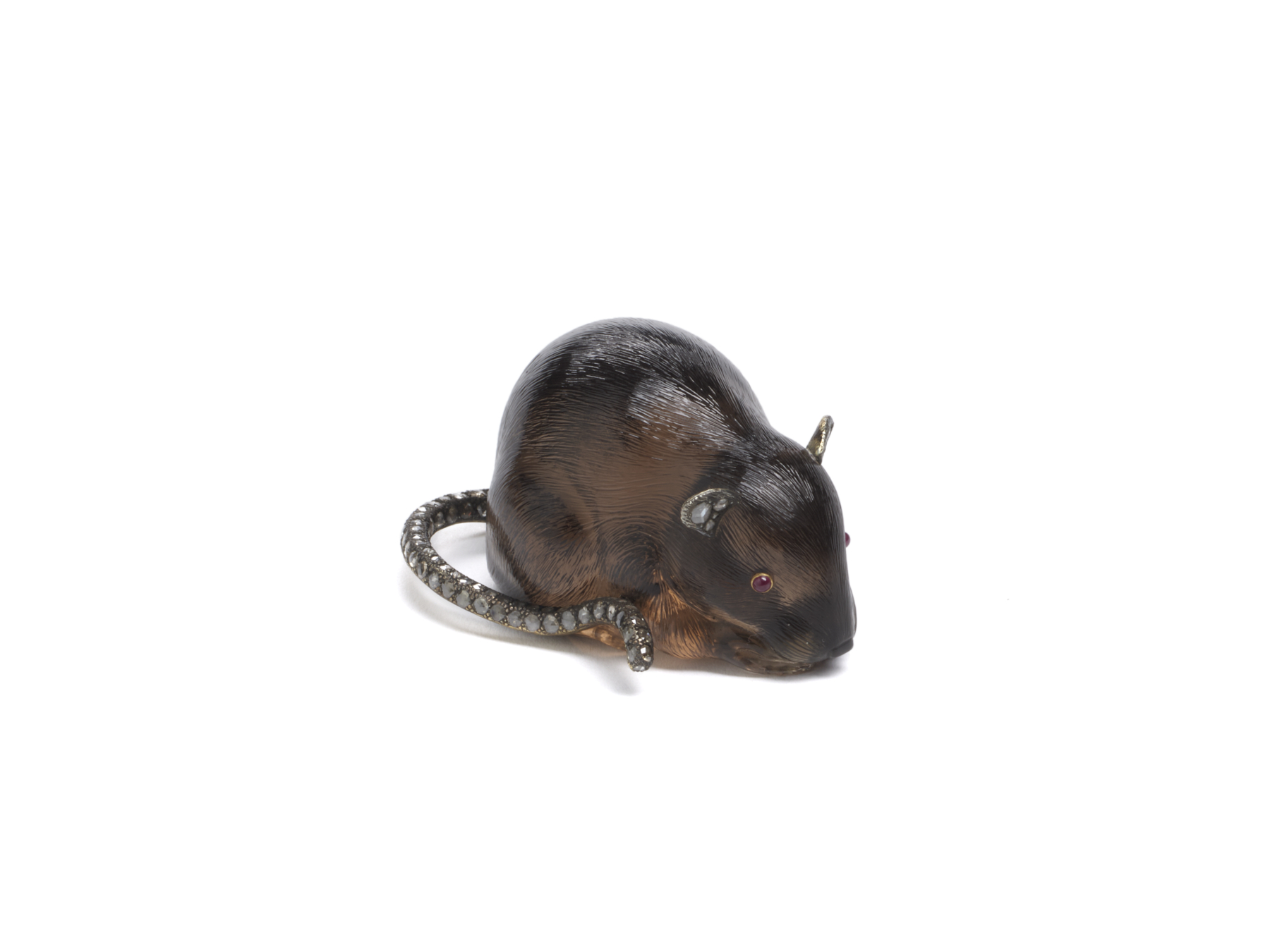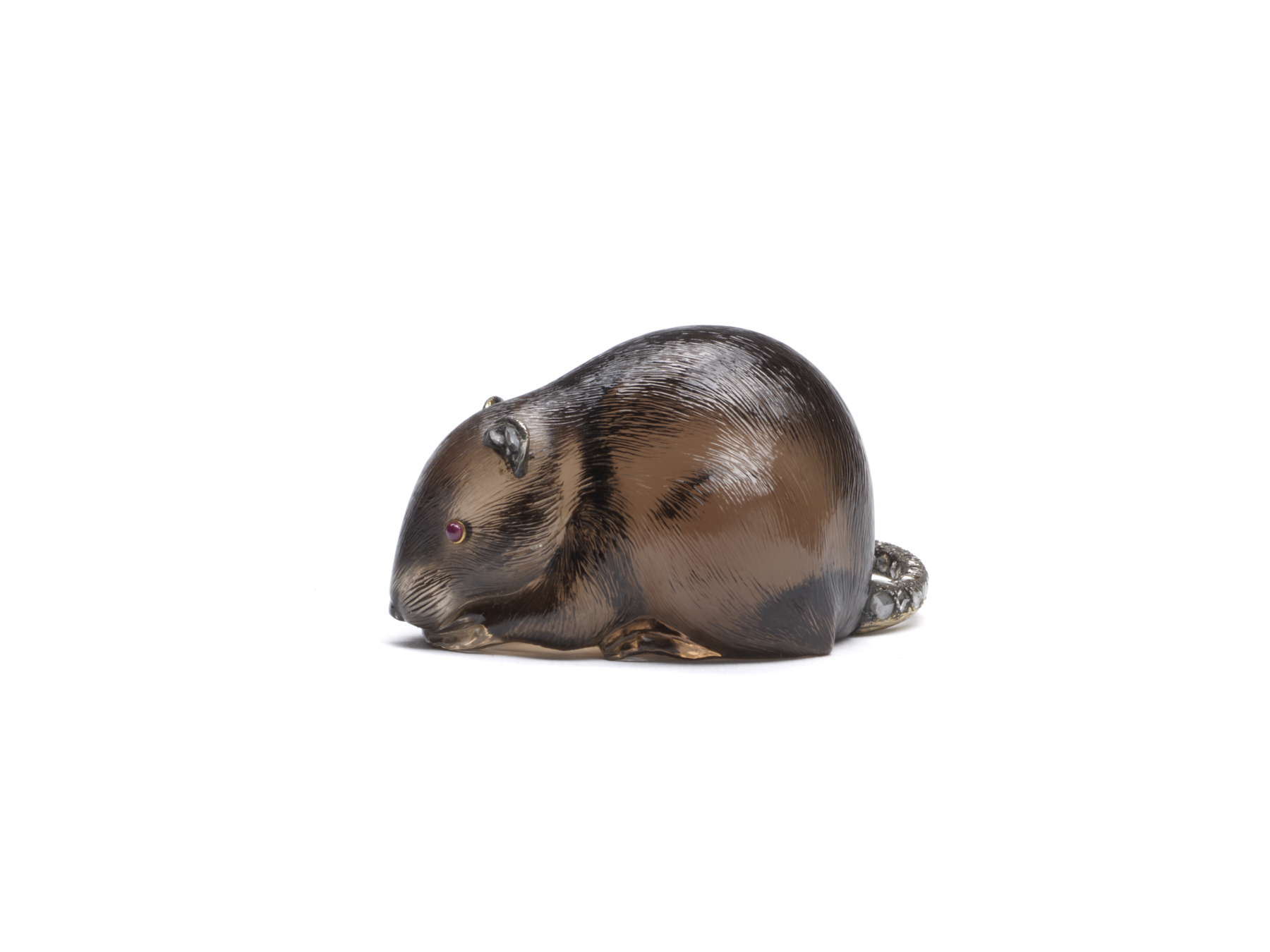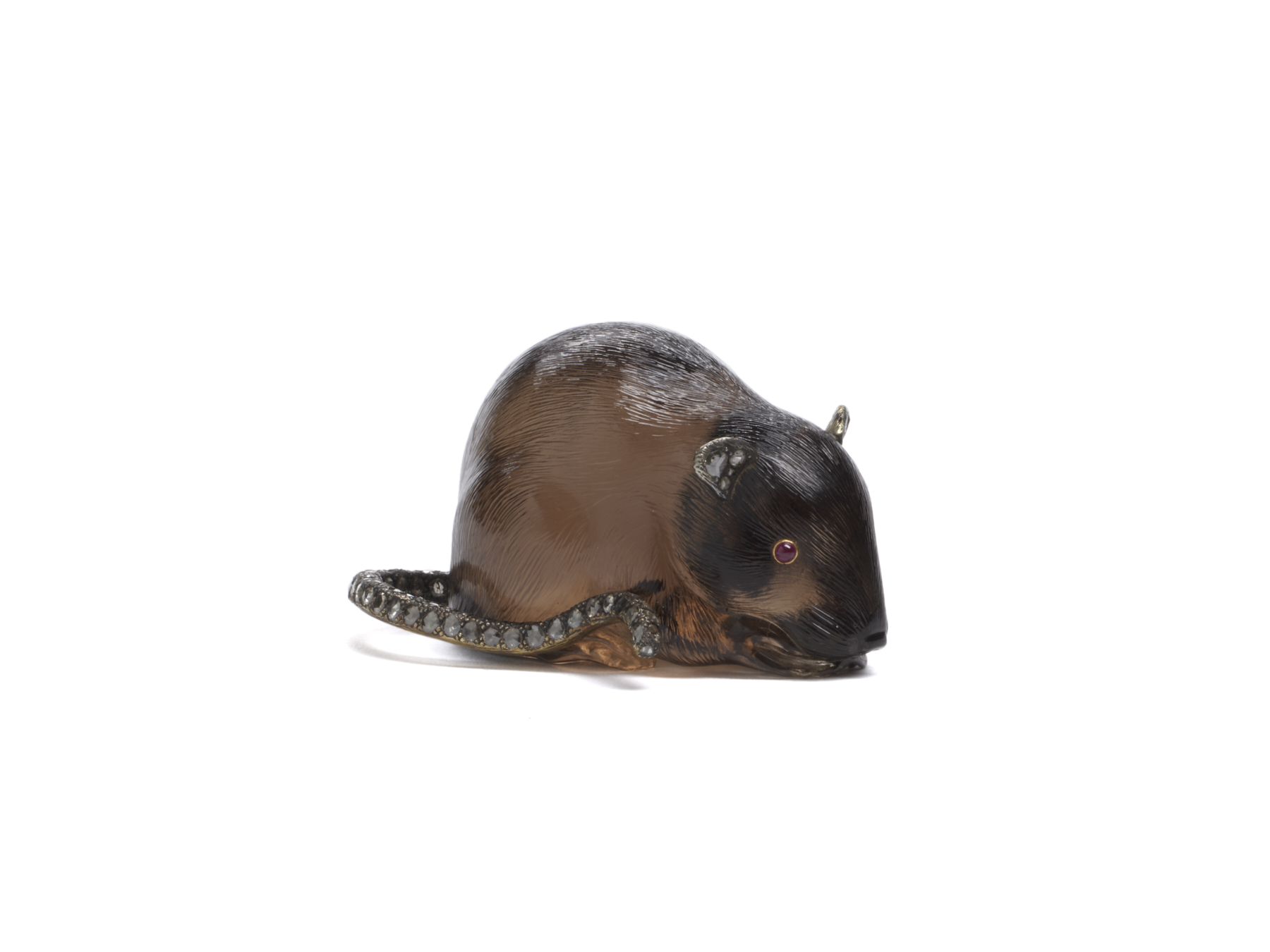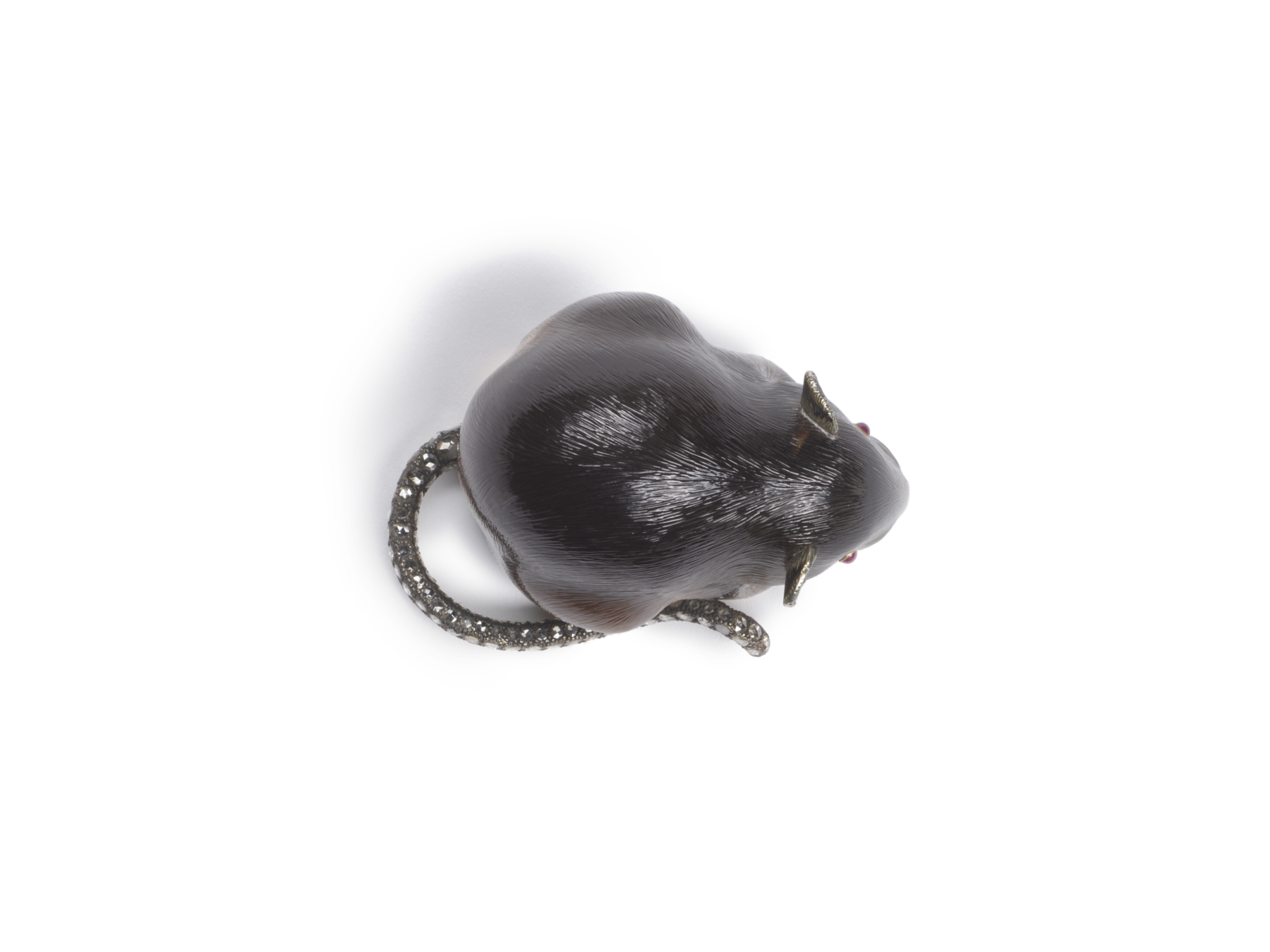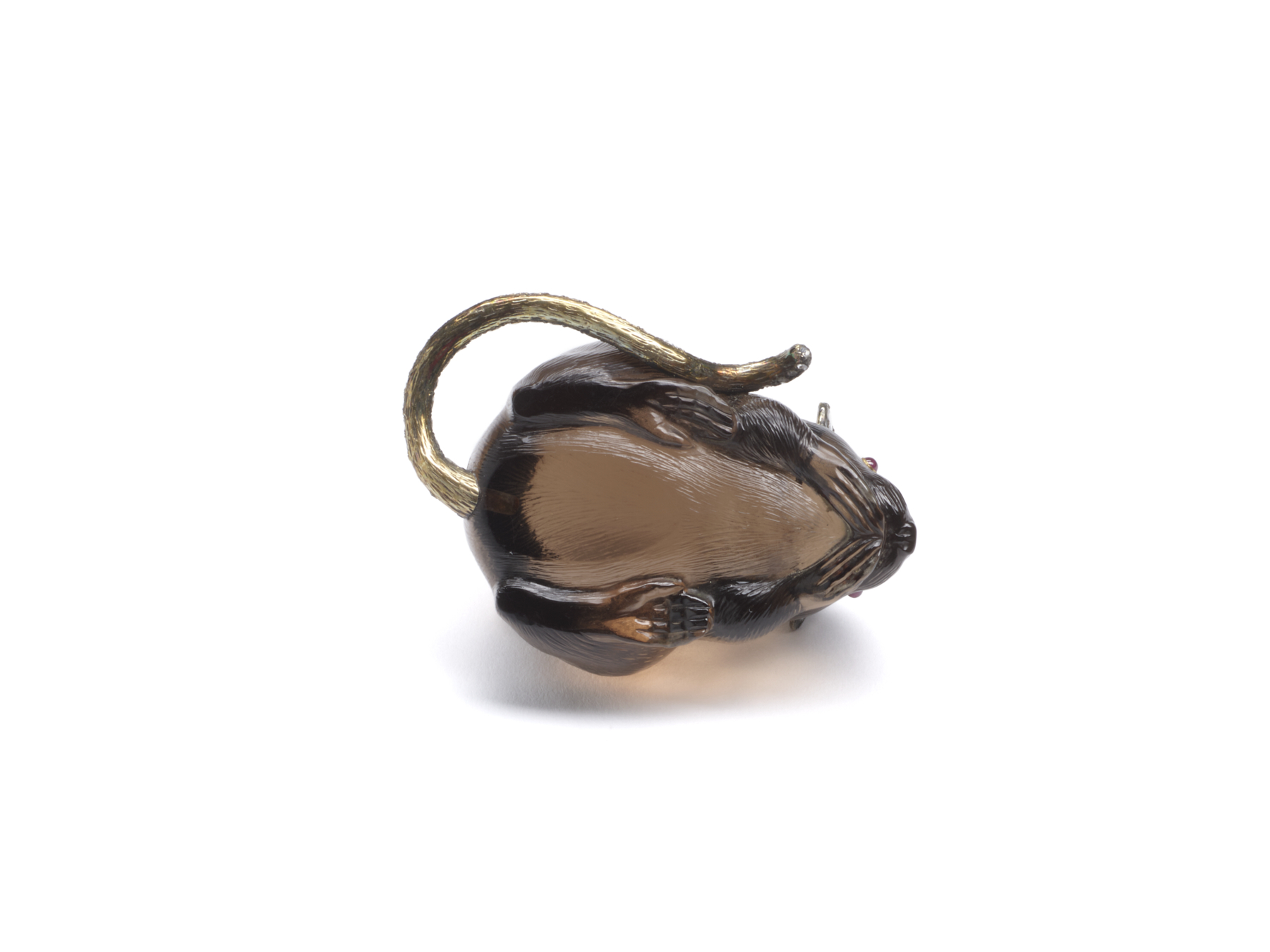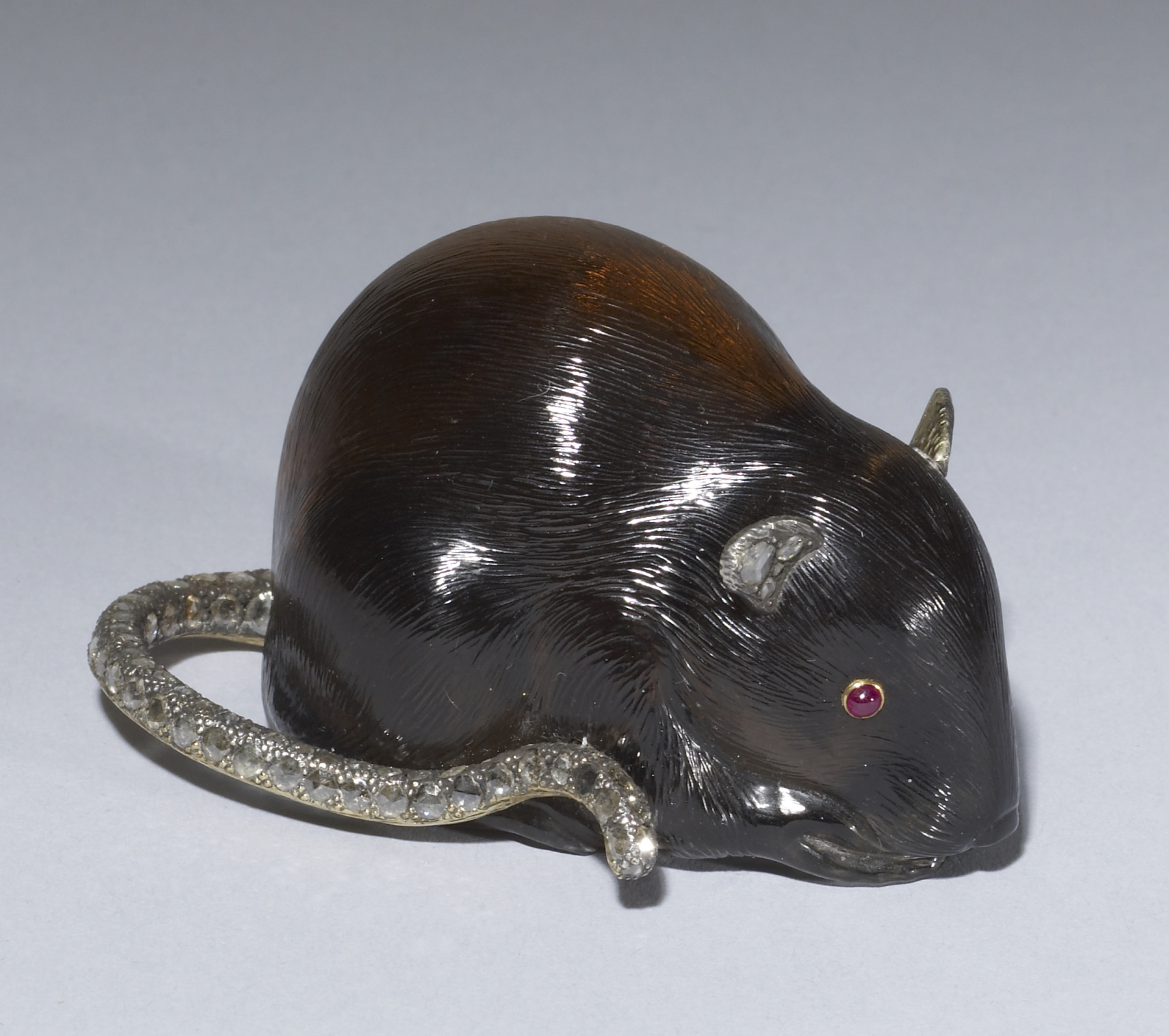Mouse
(18th and 19th Centuries )
This tiny hardstone mouse is studded with diamonds, and has rubies for eyes. The House of Fabergé began making hardstone animals in the 1890s and they proved popular with their elite clients. Queen Alexandra (wife of the British King Edward VII) built a large collection, and production peaked in the years immediately before the outbreak of the First World War in 1914. Objects such as this mouse were inspired by Japanese netsuke. Carl Fabergé owned over 500 of these. He married this admiration of Asian art with the rich Russian tradition of hardstone carving.
Provenance
Provenance (from the French provenir, 'to come from/forth') is the chronology of the ownership, custody, or location of a historical object. Learn more about provenance at the Walters.
Oscar Kaplans [?]; Anna Marie Feller, Baltimore, late 1970s, by purchase; Dr. John Q. Feller, K.H.S., Clarks Summit, Pennsylvania, June 1996, by inheritance; Walters Art Museum, 2007, by gift.
Exhibitions
| 2003-2004 | The Fabergé Menagerie. The Walters Art Museum, Baltimore; Columbus Museum of Art, Columbus; Portland Art Museum, Portland. |
Geographies
Russia, Saint Petersburg (Place of Origin)
Measurements
1 5/16 x 1 9/16 x 2 3/8 in. (3.4 x 4 x 6 cm)
Credit Line
Gift of Dr. John Q. Feller, K.H.S. in memory of his sister, Anne Feller Kennedy, 2007
Location in Museum
Accession Number
In libraries, galleries, museums, and archives, an accession number is a unique identifier assigned to each object in the collection.
In libraries, galleries, museums, and archives, an accession number is a unique identifier assigned to each object in the collection.
42.1514

